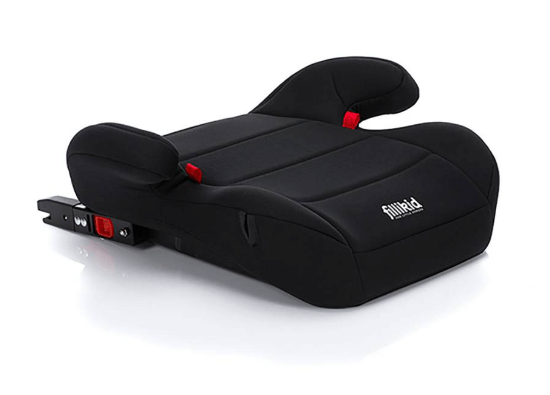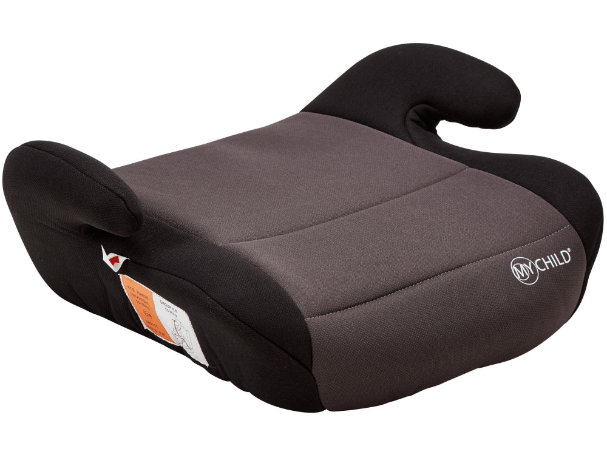In the grand scheme of prioritizing youthful safety while journeying on highways, adherence to Illinois’s booster seat statutes takes precedence. Booster seats, with their primary function being elevation to a higher seating level for youngsters aged between four and eight years old, ensure optimal placement of the seatbelt across their small bodies. This element is indeed pivotal; standard vehicle belts are fashioned for adults and therefore fail in adequately securing children – potentially endangering their well-being.
The relevance of booster seats extends past mere acquiescence with Illinois’s booster seat directives. They represent more than a legal obligation; they accommodate critical physiological disparities between children and grown-ups. By effectively channeling collision energy towards robust parts of a child’s anatomy – such as the chest and hips – these handy contraptions drastically reduce chances of grave injuries during unfortunate vehicular mishaps. The weightage given to these inventive juvenile restraints thus cannot be overstated or exaggerated.
Child Passenger Safety: The Basics
Securing the safety of our young ones during travel extends beyond merely buckling up their seat belts. Grasping the nuances of suitable child restraint systems, varying across ages and proportions, becomes paramount. Consider booster seats for example – research indicates a marked reduction in injury risk for children who have outgrown forward-facing car seats yet are not quite large enough to utilize adult seat belts safely. The adherence to and comprehensive understanding of standards pertaining to child passenger safety can play a decisive role in preventing vehicular mishaps involving youngsters.
Particularly noteworthy is Illinois’ law regarding booster seats which provides an all-encompassing reference for parents and guardians on matters relating to child passenger protection. This legislation necessitates utilizing federally approved child restraint mechanisms based upon variables such as age, weight, and height of the juvenile passengers. It underscores fitting the minor into the seat rather than adapting it around the vehicle’s configuration; consequently ensuring that these protective measures fulfill their intended purpose effectively. Comprehending this law isn’t solely about evading legal repercussions but more crucially revolves around preserving young lives by offering them a secure environment while travelling.
Criteria for Using Booster Seats: Age, Weight, and Height
Grasping the intricacies of Illinois’ booster seat regulations is pivotal in safeguarding our young passengers. The statutes within this jurisdiction dictate that children must remain buckled in a booster seat until their eighth birthday. Yet, age isn’t the sole determining factor. Regardless of their years, children are obligated to utilise their booster seats until they attain 4 feet 9 inches in height; a testament to Illinois’s unwavering commitment towards prioritising child safety during commutes.
Beyond merely considering age and stature, weight forms an integral aspect of these stringent Illinois-based booster seat prerequisites. The legislation candidly mandates that any child weighing less than 40 pounds must be secured using a suitable child restraint system such as forward-facing car seats while those between the weights of 40 and 80 pounds should employ booster seats. These explicit directives act as safeguards ensuring each vehicle’s seat belt fits correctly on every child – positioned across the upper thighs rather than over the stomach and spanning across the chest instead of encircling the neck.
Compliance with Child Restraint Laws in Illinois
Within the boundaries of Illinois, a peculiar emphasis is placed on the safeguarding regulations for juvenile passengers. The stringency in these laws is not accidental but rather purposefully designed to reinforce young riders’ security. A cornerstone of these legislative measures revolves around an age, weight, and height-specific mandate regarding booster seat usage.
The Child Passenger Protection Act sets forth this policy in Illinois. Specifically, it outlines that infants through two-year-olds must be fastened securely within a rear-facing seat unless they surpass either 40 pounds in weight or 40 inches in stature.
As children sprout both physically and chronologically, there is a corresponding evolution in their travel safety requirements. An obligatory transition from two to eight years necessitates the use of child restraint systems – typically synonymous with safety booster seats. Post-boosters era sees another shift enforced by Illinois law; children between ages eight and sixteen are required to utilize seat belts.
Whether we’re discussing booster seats or seat belts, compliance with these child restraint legislations supersedes any potential risk leading up to severe injuries or even fatality during unfortunate accidents.
Penalties for Non-Compliance with Booster Seat Regulations

Adhering to the stipulations regarding booster seats is not merely a crucial aspect of child safety, but also an established legal requirement in numerous states, including Illinois. Ignoring or disregarding such regulations frequently equates to severe consequences. It’s essential that individuals grasp that state law necessitates booster seats for children who have outgrown their forward-facing seating arrangement and are yet under eight years old, weigh less than 40 pounds or lack the height exceeding 57 inches. This significantly underscores the relevance of age within the framework of booster seat regulations in Illinois.
Non-compliance with these laws may trigger harsh penalties and fines which intensify with recurrent violations. A first-time violation might attract a fine amounting to $75, whereas repeated offenses could witness this increasing to as much as $200. Furthermore, these violations may result in suspension of driving privileges causing considerable disruption to one’s mobility and everyday life dynamics. Thus it becomes not only judicious but legally obligatory for inhabitants in Illinois to abide strictly by age-appropriate booster seat regulations.
Installation and Use of Booster Seats: A Guide
The intricacies of installing and using booster seats properly cannot be understated. A careful perusal, understanding and adherence to the manufacturer’s guidelines is paramount. Each model stands distinct in its own right, presenting unique installation specifications that demand meticulous attention. Some models might necessitate their placement solely in the vehicle’s rear seat while others might show flexibility for front seat accommodation as well.
Yet, regardless of these variances, all installations should have a common purpose – achieving an unyielding fit that firmly secures the booster seat in place without any risk of displacement during travel.
Beyond just installation details, appropriate usage techniques also play a pivotal role towards ensuring optimal functionality of the booster seat. The child must be positioned such that the lap belt comfortably hugs the upper thighs instead of resting on his or her stomach area. Concurrently, it’s imperative to ensure that the shoulder belt navigates across their chest before settling down on their shoulder; at no point should it venture near their face or neck region.
Lastly but importantly, keep vigilant about keeping these belts untwisted by making sure they lie flat against your little one’s body at all times. Such routine checks will go a long way towards ensuring your child’s safety and comfort throughout every journey.
How to Choose the Right Booster Seat for Your Child
Selecting a suitable booster seat for your precious little one requires a particular focus on the child’s unique needs. Age, stature, and weight of the child stand as primary parameters in this process. The chosen booster seat ought to be one that assures a snug fit with their seat belt. It is essential to scrutinize ratings from National Highway Traffic Safety Administration (NHTSA). These ratings affirm if the said seat adheres to Federal safety norms while also providing qualitative performance.
Endorsed by certified child passenger safety technicians, they suggest opting for high-backed booster seats when dealing with low vehicle backseats or absence of headrests. On encountering tall backseats or adjustable headrests within your car, it may be more fitting to go for a backless booster seat option instead. Furthermore, it would prove beneficial if the upper portion of your selected booster is padded using energy-absorbing foam – offering ample protection during collisions.
Above all else though, make sure that you choose a comfortable and appealing option as consistency in usage heavily depends on these factors.
After a careful examination of the child’s needs, consider these factors when choosing a booster seat:
- Age and Size: Booster seats are not one-size-fits-all. The age, weight, and height of your child are significant deciding factors. For instance, high-backed boosters are typically suitable for younger children who weigh between 30 to 40 pounds.
- Seat Belt Fit: A properly fitted seat belt is crucial in securing your child safely. Make sure that the lap belt lies low across your child’s thighs and the shoulder belt crosses their chest – avoiding their neck or face.
- NHTSA Ratings: Always check ratings from National Highway Traffic Safety Administration (NHTSA). These ratings indicate whether the selected booster seat adheres to Federal safety standards while also providing qualitative performance.
- Vehicle Compatibility: Consider the type of vehicle you have before purchasing a booster seat. High-backed boosters work best with cars having low backseats or no headrests; whereas backless boosters fit better in vehicles with tall backseats or adjustable headrests.
- Safety Features: Look out for additional safety features such as energy-absorbing foam padding on upper portions which can offer added protection during collisions.
Lastly, remember that comfort plays an essential role in ensuring regular use of booster seats by children:
- Comfort & Appeal: Choose a comfortable model that appeals to your kid’s preferences – be it color or design-wise. This will encourage consistent usage without any fuss from them.
In conclusion, selecting an appropriate booster seat involves careful consideration of multiple aspects including size compatibility, federal safety standards adherence, vehicle suitability and comfort level assurance among others.
FAQs
Booster seats play a pivotal role by ensuring that seat belts are tailored to fit children precisely, thereby offering protection during unforeseen accidents. They act as an elevation for the child’s body so that the seatbelt securely fits over their sturdiest physical parts thus optimizing safety.
The core principles of child passenger safety necessitate making sure that children utilize an appropriate seating arrangement based on their age, weight, and height. This could range from a rear-facing seat or front-facing seat to a booster seat or even just a simple seat belt depending upon their size.
Although there might be slight variations state-wise, generally speaking, once children have outgrown the weight or height limit for their forward-harness facing chair they should transition into using a belt-positioning booster sear until such time when the vehicle’s standard fitting seat belts can be used comfortably. Typically this happens when they attain 4 feet 9 inches in terms of height and fall within the age bracket of 8-12 years.
As per Illinois law mandates all kids under eight years need to be secured utilizing an appropriate child restraint system inclusive of booster chairs. It further advises continuing with boosters till kids grow tall enough permitting proper fitting with standard car seatbelts.
Penalties vary across states but usually encompass monetary fines along with potential demerit points being added onto driver licenses as well.
Boosters must always be installed at your car’s back seats. They should be firmly secured using the seatbelt and strictly as per manufacturer’s instructions. The child must sit with their belt positioned low across their waist and shoulder belt crossing their chest.
While selecting a booster, keep in mind your kids age, weight, height along with how it fits within your vehicle. Opt for a chair that is simple to install and adjust while also meeting safety norms. Also consider factors like comfort and design to ensure your kid will happily use it.
